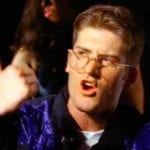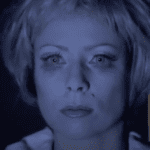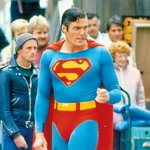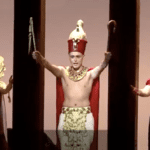 Technology
Technology  Technology
Technology  Humans
Humans 10 Everyday Human Behaviors That Are Actually Survival Instincts
 Animals
Animals 10 Animals That Humiliated and Harmed Historical Leaders
 History
History 10 Most Influential Protests in Modern History
 Creepy
Creepy 10 More Representations of Death from Myth, Legend, and Folktale
 Technology
Technology 10 Scientific Breakthroughs of 2025 That’ll Change Everything
 Our World
Our World 10 Ways Icelandic Culture Makes Other Countries Look Boring
 Misconceptions
Misconceptions 10 Common Misconceptions About the Victorian Era
 Mysteries
Mysteries 10 Strange Unexplained Mysteries of 2025
 Miscellaneous
Miscellaneous 10 of History’s Most Bell-Ringing Finishing Moves
 Technology
Technology Top 10 Everyday Tech Buzzwords That Hide a Darker Past
 Humans
Humans 10 Everyday Human Behaviors That Are Actually Survival Instincts
 Animals
Animals 10 Animals That Humiliated and Harmed Historical Leaders
Who's Behind Listverse?

Jamie Frater
Head Editor
Jamie founded Listverse due to an insatiable desire to share fascinating, obscure, and bizarre facts. He has been a guest speaker on numerous national radio and television stations and is a five time published author.
More About Us History
History 10 Most Influential Protests in Modern History
 Creepy
Creepy 10 More Representations of Death from Myth, Legend, and Folktale
 Technology
Technology 10 Scientific Breakthroughs of 2025 That’ll Change Everything
 Our World
Our World 10 Ways Icelandic Culture Makes Other Countries Look Boring
 Misconceptions
Misconceptions 10 Common Misconceptions About the Victorian Era
 Mysteries
Mysteries 10 Strange Unexplained Mysteries of 2025
 Miscellaneous
Miscellaneous 10 of History’s Most Bell-Ringing Finishing Moves
Top 10 Classical One Hit Wonders
Due to some complaints on a recent list about the lack of classical music, I am hereby giving you a classical music list. One hit wonders are famous in the modern music world, but people seldom think of them in terms of classical music. The definition we use here has to be more liberal for the sake of classical music as there are such varying degrees of knowledge of each composer. Deutsche Grammophon and Vox Records each put out a series of classical one hit wonder albums – this list is the 10 that were common to both lists. Enjoy the music!
10 Caucasian Sketches by Mikhail Ippolitov-Ivanov
httpv://www.youtube.com/watch?v=v/y_szpKtAbCg
Caucasian Sketches is an orchestral suite written in 1894 by Russian composer Mikhail Ippolitov-Ivanov. It is the most often performed of his compositions and can be heard frequently on classical radio stations. The final movement, entitled The Procession of the Sardar, is often heard by itself, and is a favorite of “Pops” concerts. The suite, written in 1894, is an excellent example of Ippolitov-Ivanov’s debt to his composition teacher Rimsky-Korsakov, as well as to the influence of folksong, in this case the music of Georgia.
9 The Flower Duet by Léo Delibes
httpv://www.youtube.com/watch?v=v/CX-6Ej2lnwg
This is probably best known for its use as the theme music for British Airways adverts. The flower duet is taken from Delibes’ opera Lakme. The subject of the opera was suggested as a vehicle for the American soprano Marie van Zandt. Delibes wrote the score during 1881-82. Like many other French operas of the late 19th century, Lakmé captures the ambience of the Orient that was in vogue during the latter part of the nineteenth century; Bizet’s The Pearl Fishers and Massenet’s Le roi de Lahore being two other examples.
8 Cavalleria Rusticana by Pietro Mascagni
httpv://www.youtube.com/watch?v=v/jDVFaheqQAg
Cavalleria Rusticana an opera in one act by Pietro Mascagni to an Italian libretto by Giovanni Targioni-Tozzetti and Guido Menasci, adapted from a Sicilian short story written by Giovanni Verga. Considered one of the classic verismo operas, it premiered on May 17, 1890 at the Teatro Costanzi in Rome. Since 1893, it has often been performed in a so-called Cav/Pag double-bill with Pagliacci by Ruggero Leoncavallo. Above we have the intermezzo from the opera.
7 Meditation from Thais by Jules Massenet
httpv://www.youtube.com/watch?v=v/mXuzLRVi6qk
Massenet was a French composer. He is best known for his operas, which were very popular in the late 19th and early 20th century; they afterwards fell into oblivion for the most part, but have undergone periodic revivals since the mid-1970’s. The opera Thais is based on the novel of the same name by Anatole France. It was first performed at the Opéra in Paris on March 16, 1894, starring the American soprano Sybil Sanderson, for whom Massenet had written the title role. In 1907, the role served as Mary Garden’s American debut in New York.
6 The Prince of Denmark’s March by Jeremiah Clarke
This voluntary commonly, though wrongly, known as the Trumpet Voluntary, is a work by Jeremiah Clarke, composed around 1699. For many years, the piece was incorrectly attributed to the better-known composer, Henry Purcell. The piece is actually taken from the semi-opera The Island Princess, a joint musical production of Clarke and Daniel Purcell (Henry Purcell’s younger brother). The march was originally written in honor of George, Prince of Denmark, the consort of Queen Anne of Great Britain. It is very popular as wedding music (it was played during the wedding of Princess Diana and Prince Charles in St Paul’s Cathedral) and was often broadcast by the BBC during World War II, especially when broadcasting to occupied Denmark. Clarke was born in London in 1674 and killed himself with a gun in 1707.
5 Minuet from String Quintet in E by Luigi Boccherini
Boccherini was a classical era composer and cellist from Italy, whose music retained a courtly and galante style while he matured somewhat apart from the major European musical centers. Boccherini is mostly known for one particular minuet from his String Quintet in E, Op. 13, No. 5.
4 Rondeau by Jean-Joseph Mouret
Before you play this – I bet you have never heard of Mouret and I bet you will immediately recognize the piece. Okay – push play and read this while you listen. Mouret was a French composer whose dramatic works made him one of the leading exponents of Baroque music in his country. Even though most of his works are no longer performed, Mouret’s name survives today thanks to the popularity of the Fanfare-Rondeau from his first Suite de Symphonies, which has been adopted as the signature tune of the PBS program Masterpiece Theatre. Mouret died in an asylum..
3 Adagio in G minor by Tomaso Albinoni
httpv://www.youtube.com/watch?v=v/XMbvcp480Y4
Adagio in G minor for strings and organ is a piece composed by Remo Giazotto while supposedly based on a fragment from a Sonata in G minor by Tomaso Giovanni Albinoni which was found amongst the ruins of the old Saxon State Library, Dresden, after it was firebombed by the Allies during World War II. The Adagio was first published in 1958. This has appeared in many movies and television shows.
2 Adagio for Strings by Samuel Barber
While this Adagio is his most famous work, Barber put out a large amount of extremely beautiful vocal music. Barber’s “Adagio for Strings” originated as part of his String Quartet No. 1, Op. 11, composed in 1936. In the original it follows a violently contrasting first movement, and is succeeded by a brief reprise of this music. Barber’s own arrangement for string orchestra was given its first performance by Arturo Toscanini with the NBC Symphony Orchestra on November 5, 1938 in New York.
1 Canon in ‘D’ by Johann Pachelbel
httpv://www.youtube.com/watch?v=v/6wpPk8qk3uQ
You all knew this would be on the list and in position 1 didn’t you? This piece of music is somehow made famous in each generation. Jerry C is probably the person to blame for the current wave due to his often viewed youtube clip of him playing it on an electric guitar. The version above is a very nice recording which uses an organ for the basso continuo part (it sounds like an authentic recording in fact, but I may be wrong). It was written in or around 1680, during the Baroque period, as a piece of chamber music for three violins and basso continuo, but has since been arranged for a wide variety of ensembles. The Canon was originally paired with a gigue in the same key, although this composition is rarely performed or recorded today.








